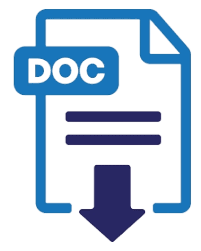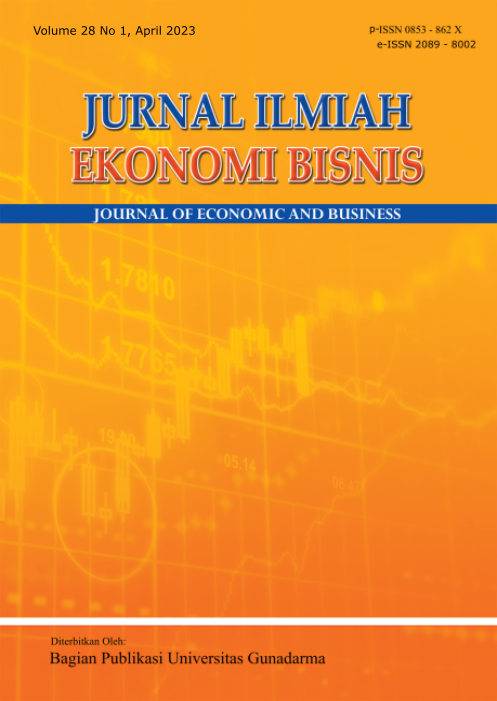QUALITY MANAGEMENT SYSTEMS FOR DESIGN CONSULTANTS - A CASE STUDY IN COMMERCIAL PROJECT CONSULTANTS IN THE GREATER JAKARTA AREA
Post Graduate Civil Engineering Universitas Tarumanagara
Indonesia
Abstract
Standardization of Quality Management System (QMS) for design consultants has not been established as a regulation by Indonesian local government. As a result, quality of design consultants varies. The research combined literature review and interviews with experts in design consultants, addressing 12 elements of quality management system based on ISO 9001 AND 9004. The quality data gathered from consultants were then verified with major users to find gaps and point of improvements. There were four finding of mismatch, namely: documentation and follow up by consultant to feed-back and complaints of service user, product verification before it reaches the service user, innovation to process, and design result. These four findings of mismatch were then looked into further with the corresponding consultant and service user. As the end of the study, a model completed with activities briefs and checklists were proposed to address mismatch and as improvement.
Keywords
References
Abrahamson, E. (1996) ‘Management fashion’, Academy of Management Review, 21(1), pp. 254–285.
Atuahene, B. T., Agyekum, K. and Baiden, B. K. (2018) ‘Client-contractor relations on construction projects in Ghana’, International Journal of Project Organisation and Management, 10(4), p. 333. doi: 10.1504/ijpom.2018.10015894.
Barrett, D. and Khalfan, M. M. A. (2018) ‘“Show me the compassion!” Changing the organisational mind within construction industry’, International Journal of Happiness and Development, 4(1), p. 40. doi: 10.1504/ijhd.2018.10011594.
Benders, J. and Verlaar, S. (2003) ‘Lifting parts: putting conceptual insights into practice’, International Journal of Operations and Production Management, 23(7), pp. 757–774.
Bharath, A. A. and Shankar, M. G. (2020) ‘Developing a framework for economically improving the quality of a construction process by Six Sigma’, International Journal of Six Sigma and Competitive Advantage, 12(2/3), p. 294. doi: 10.1504/ijssca.2020.110978.
Burney, D. J. et al. (2003) Design Consultant Guide, City of New York, Department of Design and Construction.
Buvik, M. P. and Rolfsen, M. (2015) ‘Prior ties and trust development in project teams – a case study from the construction industry’, International Journal of Project Management, 33(7), pp. 1484–1494.
CABEM Technologies (2017) The History of the ISO 9000 Series, CABEM Technologies. Available at: https://medium.com/@cabem/the-history-of-the-iso-9000-series-3e7b4e87c43.
Cachadinha, N. M. (2009) ‘Implementing quality management systems in small and medium construction companies: a contribution to a road map for success’,’ Leadership and Management in Engineering, 9(1), pp. 32–39.
Cheung, S. O. and Qi, X. (2017) ‘Managing for innovation developments in construction organisations’, International Journal of Project Organisation and Management, 9(3), pp. 249–273. doi: 10.1504/IJPOM.2017.087576.
Cianfrani, C. A. et al. (2001) The ASQ ISO 9000:2000 Handbook. Milwaukee: American Society for Quality.
Ezeldin, A. S. and Abu-Ghazala, H. (2007) ‘Quality Management System for Design Consultants: Development and Application on Projects in the Middle East’, Journal of Management in Engineering, 23(2).
González, P. et al. (2013) ‘Analysis of causes of delay and time performance in construction projects’, Journal of Construction Engineering and Management, 10, pp. 1–9.
Han, H., Lee, S. and Peña-Mora, F. (2012) ‘Identification and quantification of non-value-adding effort from errors and changes in design and construction projects’,’ Journal Construction Engineering Management, 138(9), pp. 98–108.
Heizer, J., Render, B. and Munson, C. (2020) Operation Management. 13rd edn. Harlow, United Kingdom: Pearson.
International Organization for Standardization (2009) ISO 9004:2009 Managing for the sustained success of an organization — A quality management approach, International Organization for Standardization. Available at: https://www.iso.org/obp/ui/#iso:std:iso:9004:ed-3:v1:en (Accessed: 2 April 2021).
Jarkas, A. M. (2014) ‘Factors impacting design documents quality of construction projects’, International Journal of Design Engineering, 5(4), p. 323. doi: 10.1504/ijde.2014.067076.
Jelodar, M. B., Yiu, T. W. and Wilkinson, S. (2016) ‘A conceptualisation of relationship quality in construction procurement’,’ International Journal of Project Management, 34(6), pp. 997–1011.
Khalfan, M. M. A., Alshanbri, N. and Maqsood, T. (2016) ‘Investigating the role of human resource management in assisting the employee replacement process within the construction industry in the Kingdom of Saudi Arabia’, International Journal of Knowledge Management Studies, 7(1–2), pp. 117–135. doi: 10.1504/IJKMS.2016.080247.
Kog, Y.-C. and Loh, P. K. (2012) ‘Critical success factors for different components of construction projects’, Journal of Construction Engineering and Management, 138(4), pp. 520–528.
Leong, T. K., Zakuan, N. and Saman, M. Z. M. (2014) ‘Review of quality management system research in construction industry’, International Journal of Productivity and Quality Management, 13(1), pp. 105–123.
Loosemore, M. (2015) ‘Construction innovation: fifth generation perspective’, Journal of Management in Engineering, 31(6), pp. 1–9.
Negi, P. S. et al. (2017) ‘Six Sigma in construction industry : a review’, Int. J. Productivity and Quality Management, 22(4), pp. 451–465.
Olafsdottir, A. H. et al. (2019) ‘Using system dynamics to better understand quality management in the construction industry’, International Journal of Productivity and Quality Management, 26(2), pp. 223–245. doi: 10.1504/IJPQM.2019.097768.
Olafsdottir, A. H., Ingason, H. T. and Stefansson, G. (2016) ‘Defining the variables for a dynamic model of quality management in the construction industry: Results from stakeholder group model-building sessions’, International Journal of Productivity and Quality Management, 19(2), pp. 187–208. doi: 10.1504/IJPQM.2016.078886.
Page, T. (2016) ‘An action research approach to early concept iteration in a design consultancy’, International Journal of Product Development, 21(1), pp. 41–58. doi: 10.1504/IJPD.2016.076923.
R. Hirschmann (2020) GDP growth rate for the construction sector in Indonesia 2012-2019, Statisca. Available at: https://www.statista.com/statistics/1090479/indonesia-construction-gdp-growth-rate/ (Accessed: 2 April 2021).
Rahmani, F., Khalfan, M. M. A. and Maqsood, T. (2016) ‘Analysing the drivers for early contractor involvement adoption by construction clients’, International Journal of Procurement Management, 9(4), pp. 373–397. doi: 10.1504/IJPM.2016.077701.
Senaratne, S. and Jayarathna, T. (2012) ‘Quality planning process of construction contractors: case studies in Sri Lanka’,’ Journal of Construction in Developing Countries, 17(1), pp. 103–115.
Suddaby, R. and Greenwood, R. (2001) ‘Colonizing knowledge: commodification as a dynamic of jurisdictional expansion in professional service firms’, Human Relations, 54, pp. 933–953.
Thorpe, B. and Sumner, P. (2004) Quality Management in Construction,. Aldershot, Hants.: Gower Publishing,.



